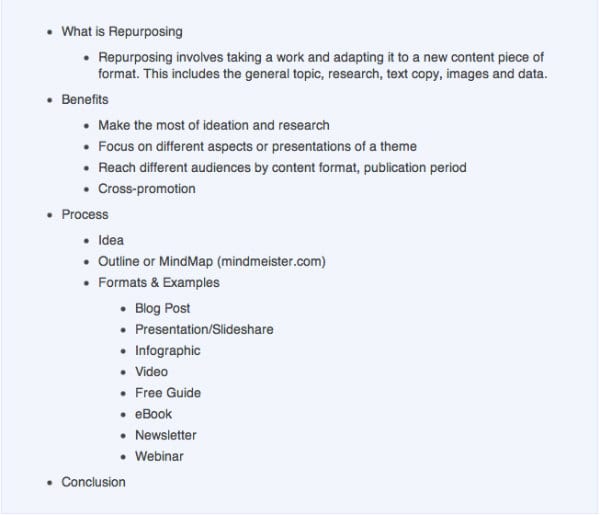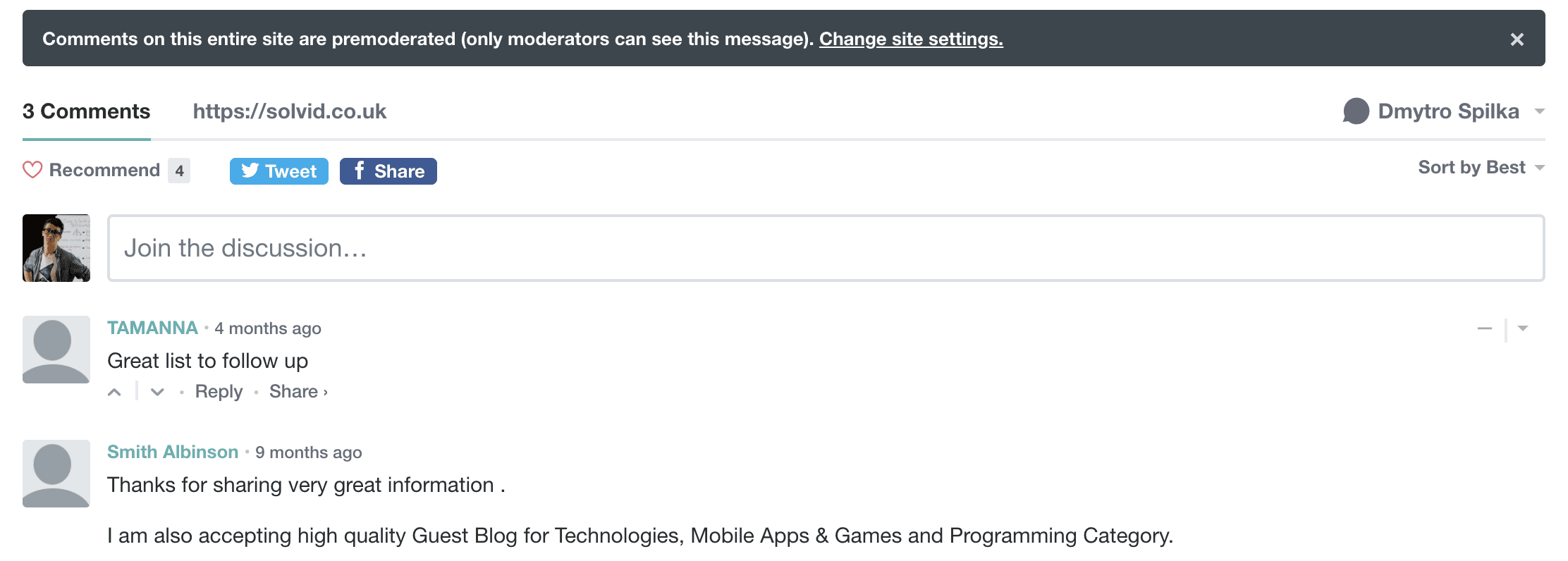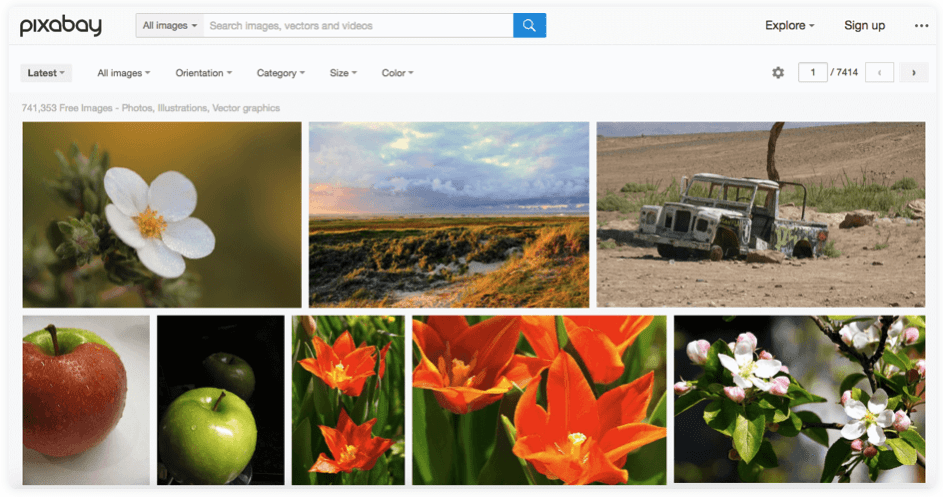We’re living in an age where everybody is capable of becoming a writer and having their works on display across the world wide web, accessible to billions of potential readers.
There’s nothing better than adopting a creative hobby and even turning your passion into a career. The beauty of writing is that there is a world of possibilities out there for anybody who feels like they belong in front of a keyboard.
There are also limitless styles and personas to adopt for your work. There’s no set blueprint out there to follow, and there are few industries around for users to really get creative and idiosyncratic with their output.
With this in mind, it seems hypocritical to publish a list of 20 must-use writing strategies, but audiences can be a very demanding and fickle bunch. The likes of Hunter S Thompson and Jack Kerouac would no doubt recoil at the thought of optimising their content for modern readers’ short attention spans, but it’s important for developing writers to consider the wants and needs of those who’ll be consuming their work.
Below, we’ve assorted 20 essential writing strategies for professionals and hobbyists alike to follow in order to create winning content that will keep audiences engaged, enthralled and entertained.
1. Entice your reader with a strong opening sentence
There’s an argument to be made that your opening sentence is the most important part of your article, essay, or book.
Why? Because there’s every chance that your readers aren’t actually committed enough to read your content without finding a reason to do so. Your opening sentence acts as a hook that will entice them into reading on.
Charlie Brooker may have found fame in his thrilling Black Mirror Netflix series, but he began his illustrious career in media as a journalist, and regularly contributed to The Guardian with his withering insights into the political and technological climate both domestically and overseas.
Brooker’s content would often feature disarmingly strong opening lines, exemplified by “Every life includes significant landmarks: your first kiss, your first job, your first undetected murder.”

Image Source: The Guardian
While this particular approach is riskily deadpan, you’d be hard-pushed to navigate away from the page after reading such an assertive, funny and intriguing introduction.
Other successful methods include addressing the reader directly with a question, or a relatable piece of mise-en-scene.
2. Treat your opening paragraph as a travel itinerary
So, you’ve piqued your audience’s attention with an enticing opening sentence. Great. Now they’ll be eager to know what they’re getting themselves in for.
Be sure to make strong references, even if not directly, towards where the reader is headed on the journey that your content is set to take them on.
Your opening paragraph should take on the feel of a travel itinerary. You can make it creative, or direct, but readers will be looking for an idea of what’s in store and it’s your duty to let them know.
3. Keep your audience in mind
Who is your audience? What are their interests and passions? Could they understand the references you’re planning on making?
Remember how vital your audience is and how important it is to keep them in mind at all times. If you’re planning on ignoring your readership you may as well buy a diary.
Be sure to regularly acknowledge their presence and appeal to them. You could either address them directly or simply appeal to their interests. Writtent lists an example of this thus: “Your family’s safety is your number one concern. Whether you plan to travel or stay at home this holiday season, we have all the safety tips you need to keep everyone safe, healthy and happy during the holidays.”
4. An outline brings structure
It’s surprising how many writers dive into producing their content with little or no structure in place. It’s absolutely imperative that you create some form of layout ahead of getting down to churning out your piece in order to avoid mass digressions and distractions.

Image Source: Content Marketing Institute
An effective strategy in bringing structure into your content is to map out the direction that you’re aiming to take via subheadings that are accompanied by a short sentence that can double up as an opening line for each topic as well as a reminder of where your article’s heading.
Of course, as the content is written, an author’s viewpoint can alter and their opinions can shift. There’s also an ever-present chance that you could unearth a great point that deserves more coverage than it’s been allocated. With this in mind, it’s important to retain a level of open-ended-ness in your outline, just in case your topic evolves during the production process.
5. Enjoy yourself
Remember that writing’s fun, so have fun! Of course, sometimes it’s imperative that you write a formal and serious article, but don’t be afraid to play a little bit with words, add some fun references and infuse a level of light-heartedness where appropriate.
If you find that you’re not enjoying your work, your productivity and the quality of your output suffers. Sometimes it can be difficult to have fun in writing about certain subjects – especially if you’re working on producing content for a client – but in these cases, it could be a great strategy to take a look at your subject matter and find a facet that’s intriguing or entertaining to you and focusing on it.
It shows in the quality of your work if you’re enjoying yourself, so make sure that you always find an aspect somewhere that you’ll enjoy covering. Interest helps to build interesting content.
6. Invite discussion
While you’re enjoying your subject matter and finding your verve for the content that you’re producing, try to take a moment to think again about your audience. All you need to do is spend two minutes scrolling through Twitter to see that people love discussion and debate (although, admittedly, many Twitter users’ interpretation of ‘debate’ can vary wildly to that of most upstanding citizens).
Be sure to invite discussion on your work by addressing your subject from multiple angles and viewpoints. An open and shut case is good for removing ambiguity in your publication, but it leaves few talking points in its wake.
You could even embed a prompt for your readers to discuss certain topics within your text. Ending your article with a line like: “These 20 must-use writing strategies have saved me from sending my readers to sleep on many occasions! What are your favourite strategies that you feel should be added to our list?”
Adding a comment section can be a good way to invite discussion.

7. Keep topical where possible
The internet’s a big place, and can often feel like it’s populated entirely by bloggers and content creators that are intent on stealing your readership.
For every prospective topic to write about there’s likely already a mound of digital articles and popular thoughts offered by an array of authors worldwide.
To gain prominence, it’s worth keeping your finger on the pulse of emerging news stories and keeping your ear to the ground in the search for fresh insight that could lead to you creating a brand new take or viewpoint for your topic.
If, for example, you’re passion can be found in producing content surrounding the smartphone industry, you could cover the emerging subject (at the time of writing) of Samsung’s Galaxy Fold model which features the world’s first folding screen – and the industry implications of the model’s $1,980 price tag.
The current political climate worldwide is a hotbed for breaking news and increasingly controversial subjects. While the subjects associated with modern politics are ever-increasingly emotive and morbid, they make for ripe pickings if you’re looking for a topical angle to cover in a story. Just ensure that you don’t aim to stir up controversial viewpoints in your topics – the ‘hot-takes’ market is filled to the brim and regularly attracts the wrong readership.
8. Avoid waffle
We’ve all been there…usually when writing about a subject that we’re lacking fluency in. Waffle is the name given to the act of babbling on without really having a coherent point to make.
Waffle is a massive turnoff to readers, who’ll begin to question their wisdom in clicking on to your content. They’ll have navigated to your article in the belief that you’ll be discussing the subject specified in your title. Your anecdote about the time you got lost in Prague on the morning of your flight home may be great content at parties, but quite possibly too irrelevant to shoehorn into a piece about sustainable agriculture.
9. Pictures are imperative
They speak a thousand words – and take much less time to paste into an article than actually writing 1,000 words out. So it’s a no brainer, really.
There are few things in life that feel more satisfying than looking at a beautiful piece of prose, or a well-crafted analogy – but the harsh reality is that pictures are attention-grabbing tools that appeal to our visual senses.
Pictures are also essential to written texts. Imagine how boring it would be to read a 2,000-word feature piece from top to bottom without some images on hand to provide some respite. Be sure to keep your audience in mind when you’ve finished creating your content. Take a read of your final draft and identify potential positions for images.

The number of pictures you include and what kind of images to add is subjective. Just make sure that you care enough about your audience to embed some aesthetic respite.
10. What’s in it for the reader?
Why exactly should anyone read your article or blog? What will they get in return?
While you could certainly write your articles under the presumption that people will realise that you’re the next Oscar Wilde, it’s probably more logical to stop and ask yourself what motive you’ll provide them for reading your content.
Prove your worth to your readers, and don’t waste their time. They’ll want to be aware that they’ll be benefiting from reading on.
Be sure to create content that’s of use to readers. Whether that usefulness comes in the form of building knowledge or providing life-hacks – you should always look to write with your audience in mind. KopywritingKourse clearly adopted this approach in their How To Become A Copywriter (With No Experience) guide that’s eager to inform everyone that they plan to teach readers about how to develop into fully fledged copywriters.
11. Raise intrigue
Copywriting agency, Writtent, highlights the practice proposed by renowned copywriter, Joe Sugarman, who said that the purpose of the first sentence is to make sure people read the second sentence.
Sugarman’s practice can be placed at any point in an article, and its main goal is to raise intrigue for the passage ahead.
Sports journalist, Barney Ronay, has built an affectionate cult following for his dabblings in such a practice and has become something of a lure for readers who are ready and willing to embrace the intriguing introductions that are committed to his articles. In one article about Britain’s obsession with attaining Olympic medals, Ronay begins “In medical practice, the phrase “the dose is the poison” is sometimes used to describe the principle that an excess of anything can be deadly. Take enough of it and it will kill you, from kitten tears to unicorn laughter to everyday ingestion of diesel residue from your own family car.”
12. Anecdotes can add value
Stories can add buckets of value to your content just so long as they’re relevant to the points you’re aiming to make.
Taking an anecdotal approach helps people to draw conclusions on the subject matter via a relevant insight into the topic.
Personal experience can help add a new dimension to your story, and using stories to build content has become extremely popular in the world of blogging. One of The Guardian’s most popular fixtures is its ‘Experience’ section. Guest contributor, Rhianna Shaw’s piece about being buried alive by an avalanche may have been a relatively brief story, but it amassed over 140 comments and 337 links, at the time of writing.
13. Adding questions can be engaging
Placing questions within your content can make for a useful tool because readers feel challenged to answer them on a subconscious level. Strategically asking a question of your audience can make all the difference in encouraging to read deeper into your text.
There are plenty of publications that thrive on drawing in readerships through posing questions to them. The Telegraph exemplifies this in their article: “Will Brexit derail your holiday plans this summer? Everything you need to know”.
14. Quotes add colour to a story
If you produce an article that avoids drawing on the thoughts and opinions of others then it runs the risk of coming across as one-track and narrowminded. Of course, this likely isn’t the case, but a story that doesn’t draw on the voices of relevant sources means that you’ve only encapsulated one point of view: your own.

Image Source: Content Marketing Institute
Quotations help to breathe life into any subject, and drawing on the thoughts of industry professionals, stakeholders or critics of the topic that you’re covering helps to represent every side of the fence that your readers may be sitting on.
15. Nothing raises eyebrows better than a factoid
Did you know that the Mantis Shrimp can see five times as many prime colours as humans? Or that a hashtag is officially known as an octothorpe? Neither did we, but the art of the ‘quite interesting’ fact is an excellent tool for both underlining the point you’re trying to make and entertaining your audience.
As facts are designed to quantify trends or perceptions, they can be essential in bringing deep levels of context to topics surrounding just about anything – from crime to public opinion.
16. Never be fearful of a reference
On the topic of introducing deeper contexts to your content, making references to other works of literature is a great way of introducing a strong and entertaining analogy that helps to underline the messages that you’re trying to convey.
The opinion sections in news websites are filled with authors looking to make referential links between news stories and uncanny works of fiction. A browse of The Guardian immediately returned Gaby Hinsliff’s article: “These Tory defectors are the Thelma and Louise of British politics.”
Hinsliff elaborates on the reasons why she crafted the comparison within her article, but her focus on a widely known movie that her target readership will no doubt be aware of can act as a lure on its own. Suddenly a cultural reference to a movie that you enjoyed watching has transported you to a 500-word piece on British party politics – that’s the power of the reference.
Of course, it pays to be shrewd with your choice in references – and keep your audience in mind. If you’re writing an article on the rise of K-Pop, there’s a good chance your audience would be too young to understand a reference to, say, the heyday of BBC’s Top of The Pops.
17. Remember to commit enough time to proofreading
Some writers are all too eager to read back their content, keen to relive their witty use of alliteration in their introduction paragraph and the bold analogy they embedded under the third subheading.
Others, however, have difficulty in milling through their work a second time around and rush the process. This can be down to the fear of spotting errors or the fear that your mindset when you wrote the piece at 3am has significantly shifted in the cold light of day.

No matter the level of confidence in your ability and the tightness of the deadline that you’re working on for that matter, it’s vital that you allocate enough time for proofreading your content. It may be tempting to skim in the interest of saving time, but every error runs the risk of diminishing your credibility and losing the trust of your readers and/or clients.
18. Keep sincere
You might not be able to see the person reading your content, but that doesn’t mean that the basic rules of human interaction no longer apply. It’s imperative for your integrity to never agree to write anything that you don’t agree with. Your audience will pick up on your insincerity and lose confidence in the message that you’re trying to communicate.
Be sure to find passion in your content and in turn your readers will find happiness in following said passion whenever it’s poured into another webpage.
19. Don’t be afraid to take risks
More than 2 million blog posts will be published online today. There will be up to 80 million blog posts taking place over the calendar month. That’s quite a wide range of competitors to fight for exposure.
In a world that’s clogged with content, it’s likely that the people who take risks will be the ones who succeed in the industry. Challenge readers to change their perspective, include that oblique analogy, travel outside of your comfort zone. Only the truly different pieces of content will survive in the congested world of blogging.
20. Avoid masking your personality
It’s great to have influences when it comes to writing, and a sign of a great author is to keep thinking of your audience and how you can cater to them – but never forget to keep your personality firmly embedded in your work.
‘Be yourself, everyone else is taken,’ goes the popular quote that’s often misattributed to Oscar Wilde, and while it might seem like an affectation your best chance of thoroughly enjoying your work and creating truly engaging content is by pouring your personality into your articles.

